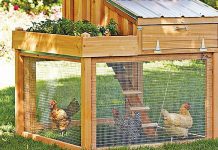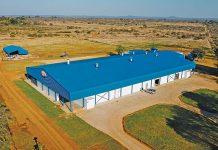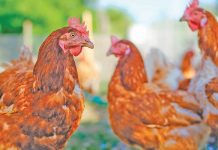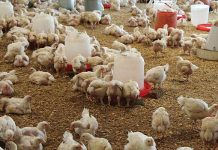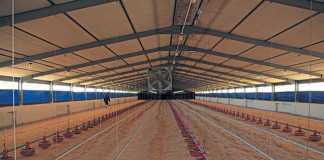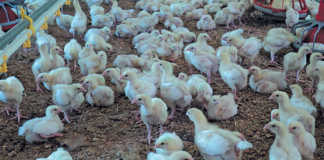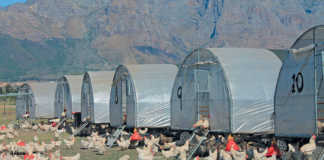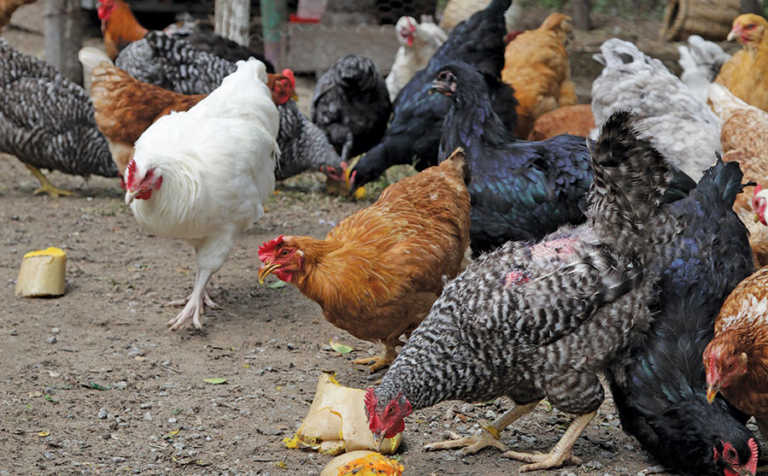
Photo: Gerhard Uys
Robert Patson of Happy Land Farm in Kyalami, Gauteng, says farming with chickens wasn’t on his to-do list. “It was never the idea, but after seeing the documentary Food, Inc., I couldn’t sleep for days.”
Patson, a truck and bakkie salesman for Isuzu, believes the way chickens are farmed is unethical, and that poultry meat can be produced in a way that makes it more nutritious.
READ Keeping chickens in the stables
After attending a poultry production course at the Agricultural Research Council, and hours of researching free-range methods on YouTube, he began a part-time free-range operation on a piece of rented land.
Beginnings
During the early stages of his research, he wanted to learn from others who were producing free-range chickens, but says the local farmers turned him down. In the end, a commercial free-range farmer in the Philippines said he could come and learn from her.
This large free-range operation introduced him to its marketing systems, the exclusive markets it supplies, such as chefs and hotels, and showed him that one can create entire value chains among smaller producers.
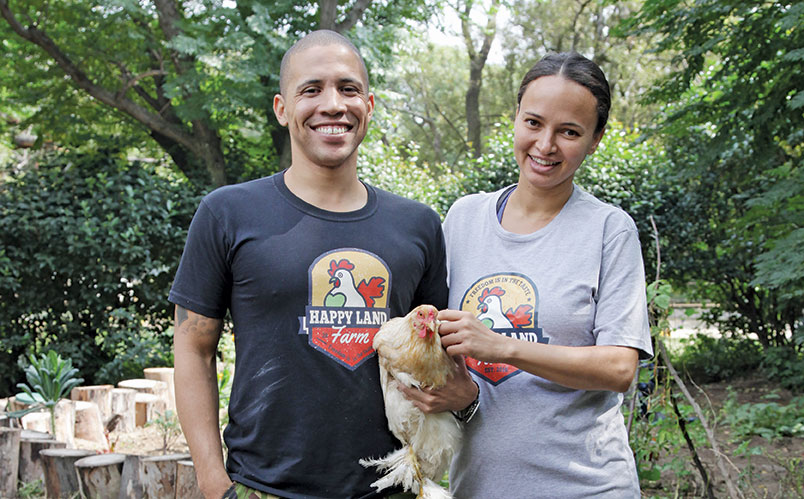
After training in that country, Patson decided that he wanted to teach the youth and women how to produce free-range chickens.
“I wanted to empower them and give my knowledge freely.”
However, he first had to test all these theories in local conditions.
Breeding
Patson believes that to alleviate poverty in rural areas especially, one needs dual-purpose chickens that can be used for both egg and meat production.
He says Rhode Island Reds and Koekoeks are ideally matched as dual-purpose breeds for South Africa, and have traceable genetics. This is important because he can tell customers, for example, how many eggs they can expect per week from a specific breed. He now breeds both these types.
READ Chicken trailers optimise egg production
Eggs are hatched in incubators and as soon as the chicks are fluffed up, they go into home-made brooders.
Koekoeks take 20 to 21 days to hatch. Patson believes in breeding chicks that need no assistance during hatching, as this weakens breeding characteristics.
Koekoeks’ eggshells aren’t as thick as other shells, which makes them easy breeders and ideal for producers starting out.
“One can also see whether they are male or female from day one, whereas other breeds need eight weeks before they can be identified. This means management is easier, as females and males can be separated immediately,” he says.
To build his breeding stock, he keeps back nine out of every 10 hatched females and one out of 10 roosters. He aims to replace roosters every two years and avoids inbreeding.
While he initially wanted to sell mainly table eggs, he realised through his affiliation with the Pretoria Poultry Club and the Southern African Show Poultry Organisation that selling fertilised eggs for hobbyists, or others interested in free-range operations, paid better.
“A table egg sells for between R2 and R3, with a fertilised egg going for R15. I now mostly sell fertilised eggs from Rhode Island Red or Koekoek breeding stock.”
He also has a small free-range broiler operation for research. His partner, Quaymberley Dudley, sells table eggs directly to restaurants and for large events hosted in their farming community.
“We currently have to turn restaurants down because we can’t meet all the demand. I don’t want to overcommit and not be able to meet supply in the end. I believe consistency is key,” Patson says.
As he is on rented land that he shares with others on a large agricultural holding, he has caged chickens that he lets roam free during the day, but also uses two mobile egg trailers that he moves around.
His first mobile was made by Frikkie van Kraayenburg, head of the Pretoria Poultry Club, and another by Dudley’s father.
The egg trailers are designed to cause minimum disturbance to the chickens.
Egg collection is done from the outside as laying boxes are built against a wall with a latch that can be accessed from the outside.
He used to have 25ℓ water tanks connected to nipple drinkers, but as he believes fresh water is crucial to health, he puts out fresh water in drinkers daily.
The mobile trailers keep chickens sheltered from the weather, but are not heated as he believes chickens should adapt to the temperature. He feeds more in winter, though, as extra feed helps them keep warm.
Limitations
“One of my biggest limitations is land. Rent is killing me. I could have been 20 times bigger if I was not limited by land,” says Patson.
“Breeding is all about numbers; those who need to replace breeding stock from me want large numbers of chickens. I am happy with my growth, but at the moment I am turning down orders because my lack of access to land does not allow me to grow enough.
“But I am also trying to empower people I trust, and push orders to other breeders when I can’t meet demand.”
Feed
Patson believes one can cost-effectively feed one’s chickens non-genetically modified (GM) organic feed, from small producers, as well as seed, on a small-scale basis.
While he vaccinates against diseases such as Newcastle disease, he believes supplements such as garlic, which he says is a natural antibiotic, go a long way in keeping the birds healthy naturally.
READ Quality and service secures free-range market
For example, Patson relies on chillies in his broiler set-up, as he says they clear away mucus that may form due to dust, and helps the chickens’ respiratory systems.
“I am not trying to breed chickens that survive in an ideal scenario. I want to breed chickens that can survive anywhere, whether in the [former] Transkei or Limpopo,” he says.
Besides commercial feed, Patson uses non-GMO, organically grown supplements, sourcing his seed for feed from Glen Seeds. Hemp seed and heirloom seeds, such as rainbow maize, form part of his chickens’ diet.
He believes hemp has all the natural essential fatty acids they need. It is also sustainable as a feed crop as it requires much less water than maize and is more resilient.
While he feeds oyster-shell grit to his layers to help harden their eggshells, he says chicken eggshells are a more affordable calcium supplement.
He began by feeding 70% commercial feed and 30% organic feed, but is now at 60% organic feed and 40% commercial feed.
“The ideal target is under 30% commercial feed, but as long as hemp isn’t legal, I can’t see how that will be achieved.
“Feed is 70% of one’s cost. And I can be much more profitable if I use less commercial feed,” he says.
Besides his own feed formula, he gives his free-range chickens spinach, squash, marigold, broken eggs, chillies, kale, herbs and fruit.
His chicks are initially all on a commercial starter feed, but from six weeks old they begin eating herbs.
Feed formula
In winter, layers receive 150g of food a day, while broilers receive 180g. Layers are fed the following feed formula per day: 19g of hemp seed; 35g of wheatgrass; 50g of commercial feed (soon to be replaced with non-GMO maize); and 10g of marigold and other medicinal herbs, which Patson also aims to increase.
About 10g/day consist of worms and other natural foraging, and 5g/ day of oyster grit or eggshells for the layers’ calcium needs. He also has some ‘secret’ ingredients.
Broilers, which need more protein, receive the following daily feed formula: 20g of hemp seed; 35g of wheatgrass; 80g of commercial feed for growth; 5g of marigold; 5g of natural foraging; and 5g of oyster grit.
Marketing
A large part of Patson’s success is his use of social media, which he says has led to most of his sales. His Instagram account has more than 1 000 followers, but he says word-of-mouth and Facebook draw the most clients.
He also visits schools to teach children about food and chickens.
“A large part of marketing is building a trusted brand.”
Passing it on
Patson says he would like to teach others to farm, assist them in setting up operations and teach them how to manage land. He says co-operative-type scenarios among smallholders can provide the answer to poverty alleviation.
“One can influence entire communities. If one farmer has chickens on one hectare, another grows non-GMO maize on another hectare for feed, and the next one another kind of feed, one can form co-ops that work towards the same goal.
“If people get land from government, one must be able to give them customers and a market also,” he says.
Phone Robert Patson on 083 495 6532, or visit happylandfarm.co.za.



